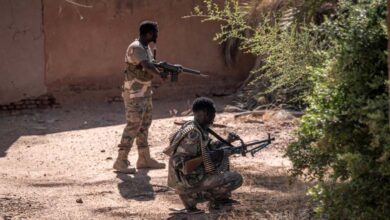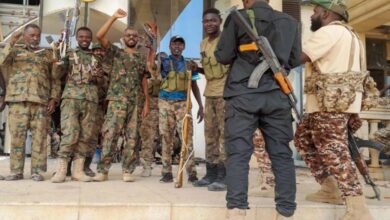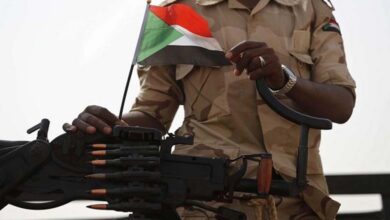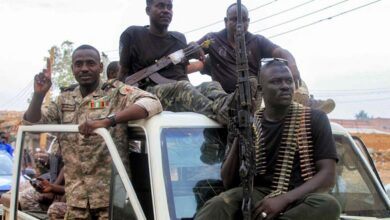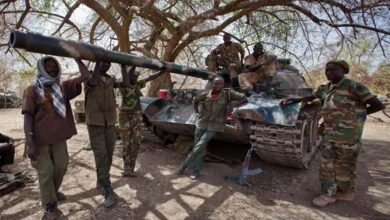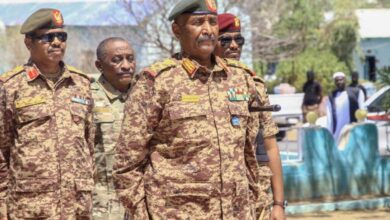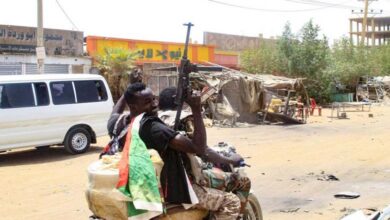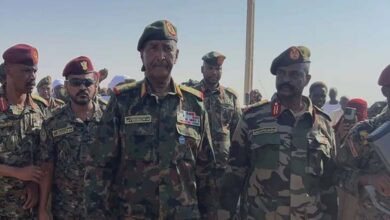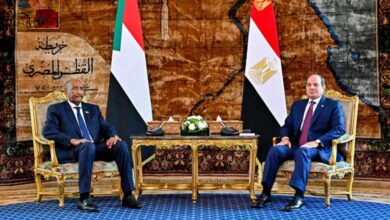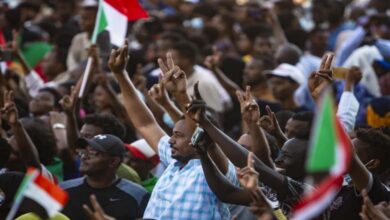“Rabia”: The Muslim Brotherhood and the Creation of Victimhood… Testimony of a Writer from the Heart of the Event
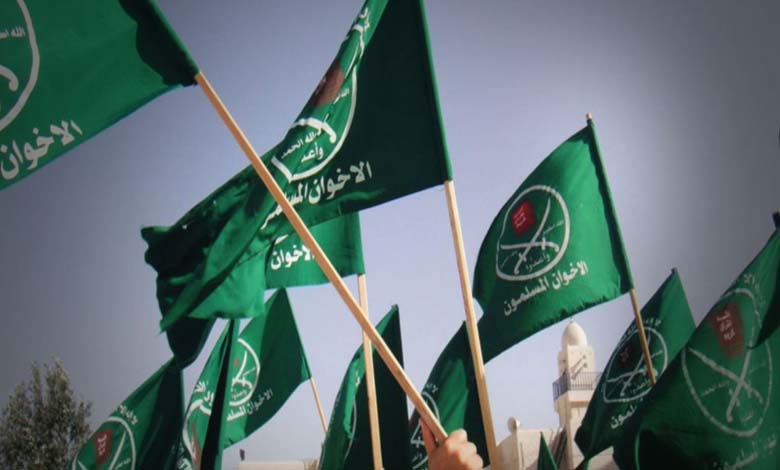
Every year around this time, the Muslim Brotherhood commemorates the dispersal of the Rabia Al-Adawiya sit-in in August 2013, an event in which the Brotherhood played a role, both intentionally and unintentionally, making itself both a victim and a perpetrator. As usual, the Brotherhood has never admitted that it contributed in any way to the events and their outcome through deliberate mistakes and actions.
-
Suspicious activity of the Muslim Brotherhood Brigades, Egypt is on the lookout
-
Muslim Brotherhood dissident reveals the terrorist history of Hossam Al-Ghomri and his role in incitement against Egypt
Instead, from the beginning of the sit-in, it worked hard to create a sense of victimhood to add to the grievances it has accumulated throughout its history, allowing it to live off these narratives and continue, gaining more sympathy, support, and followers.
We have before us the testimony of journalist and writer Fayrouz Abdelaziz, who participated in the Rabia sit-in as one of the protesters. She recorded her experience in a book titled “Rabia Al-Adawiya: A Battle Between the State and the Square,” published in 2014. She lived among the protesters day and night to get to know them up close, understand how they think, how they view the events, themselves, and others. She reports many details that were not shown by the Brotherhood’s media outlets, offering another perspective that perhaps reveals a side of the truth that many do not know. By delving into the experience, it becomes clear how the Brotherhood contributed to shaping the event and how its actions led to the final outcome, both before and after July 3rd.
-
The path of solution – The Muslim Brotherhood in Turkey pays the price of reconciliation with Egypt
-
Egypt’s Muslim Brotherhood also failed to convince el-Sisi’s opponents
Rejecting a Political Solution Before July 3rd
The author begins by saying: “Before going to Rabia Al-Adawiya Square, I was naive in my dreams, believing that the nation could accommodate everyone, and that all evil came from outsiders… Within a week of being in the sit-in, I realized that evil was lurking within the nation itself, disguised in the garb of righteousness… I looked at the faces of those forced to stay at Rabia, either through brainwashing or due to poverty, hoping they could leave without their blood being the price for the Brotherhood staying in power… But the intensity of the crisis left no solution to prevent bloodshed except a miracle, where the Brotherhood’s leadership would command their followers to leave the square and return home to negotiate.”
This was before July 3rd, when the sit-in had already been going on for a week. But the author’s hopes did not materialize, of course, as the Brotherhood, while in power, failed to understand that their initial popularity had waned due to their mistakes and those of the Islamic movement after the January Revolution.
-
Muslim Brotherhood plot to cause chaos in Egypt and Arab countries – Details
-
Egypt’s Muslim Brotherhood: Regression, Decline and Division
They did not recognize that a major political crisis required political solutions. Nor did they understand that their nature and goals caused fear in a country like Egypt. Consequently, they refused to modify their project, leading to a desire to prevent them from staying in power. However, the Brotherhood didn’t grasp any of this and viewed the situation as a conspiracy against Islam, locking themselves into a struggle and rejecting any compromise!
The author describes the situation: “I was waiting for negotiations, certain that the complexity of the political situation could only be resolved through concessions from the Brotherhood. I didn’t expect them to be foolish enough to prefer confrontation and lose everything they had worked for over the past decades.” Indeed, the Brotherhood saw confrontation as their only option, refusing early presidential elections. The author describes how the protesters saw their opponents as secular infidels, speaking only of staying in power for decades and crushing their opposition.
-
The Muslim Brotherhood attempts to harm the Egyptian state through incitement against the government
-
Egypt – The fall of the Muslim Brotherhood
The Shock and Perpetuation of Illusion
Until the announcement of Mohamed Morsi’s removal, the Brotherhood could not grasp reality, even less so after the roadmap was declared on July 3rd. Taking power had been their long-awaited dream. Afterward, they created an illusion, embedding it in the minds of their followers, believing they had reached a “stage of empowerment” and that everything would unfold according to their plan. They continued to hold on to this illusion until the final confrontation.
The author states that Safwat Hegazy announced from the stage a new escalation and the preparation of massive movements to restore the “kidnapped” president to power. She also recounts a girl who was speaking at the sit-in, saying that the entire world was supporting President Morsi and that the protesters represented all factions of society, while those who took to the streets on June 30 were fewer in number compared to the Rabia protesters. She also describes a woman referring to the sit-in as a “divine gathering,” asserting that God was sending signs to confirm His approval of the participants.
-
Where do Egypt’s Muslim brotherhood flee to Turkey?
-
Egypt Thwarts Plot to ‘Revive’ Muslim Brotherhood
The author describes individuals who believed that the sit-in would not be dispersed, as the security committees guarding the sit-in would prevent any police intervention. Among the slogans chanted by the protesters were: “Oh Sabbahi, oh Hamdeen, we’re still continuing… Morsi has 7 years left, and 8 for Abu Ismail.”
Religious Conflict:
Among the actions taken by the Muslim Brotherhood and other components of the Islamist current participating in the sit-in, which contributed to the escalation, was framing the conflict as a religious one, not a political one that could be resolved through political tools. It was depicted as a struggle between a camp representing Islam, defending it, and aiming to establish an Islamic state, and another camp opposing Islam and working to thwart this project. This is how the nature of the conflict was painted, and the speeches from the stage, as well as the Brotherhood’s affiliated media, reinforced this perception.
-
Divisions Emerge within Muslim Brotherhood as Visit by Turkish Officials to Egypt Draws Near
-
Egypt…the arrest of the terrorist Leader of Muslim Brotherhood Mahmoud Ezzat
The minds of the protesters were prepared for this battle, seeing it as a fight between good and evil, with everyone ready to sacrifice everything they had. This perception was bolstered by the spiritual atmosphere of the sit-in, with prayers, night vigils, and fasting, especially as a large part of the sit-in took place during Ramadan. The author explains that she was, at times, subconsciously affected by this atmosphere and the speeches broadcast from the stage, saying: “I looked around, and the crowd was united in one heart. Everyone was crying, and without realizing it, I let my bag drop at my feet, my tears intensified, and I was overcome with trembling, joining the crowd without even thinking about who was right or wrong.” She recounts many incidents illustrating how the protesters understood the conflict through this lens, influenced by the speeches from the stage.
-
Al-Nahda Sit-in: How the Muslim Brotherhood Turned the Square into Weapons Depots
-
How the Muslim Brotherhood Sabotaged the Educational System
Among these speeches was one by Osama Morsi, the son of Mohamed Morsi, addressing his father: “Go you and your Lord and fight, we will follow you in the battle… We pray that the president stands firm, knowing that God is with him, and we are in the camp of truth until God decides otherwise.” Among the slogans chanted by the protesters was: “Islamic, Islamic, despite the secularists.” The author also describes a woman who was giving a lesson to a group of female protesters, urging them to defend Islam by supporting the Muslim president to the point of martyrdom. She also describes the prayers, where participants invoked victory and the downfall of the “tyrant.” The protesters saw Mohamed Morsi as a “captured president” who, once freed, would establish an Islamic state based on justice.
-
Al-Burhan Sends ‘Rescue’ Delegation to Egypt in New Political Maneuver
-
A Journalist Recounts His Experience with the Muslim Brotherhood: Their Methods and Contradictions
Another protester told her in a private conversation: “All Muslims will come out to defend their religion and their president.” A woman told a group of girls that their participation in the sit-ins and marches was a jihad for God, equivalent to that of men, and that the anniversary of the Battle of Badr, which fell on those days, meant that the small group could defeat the larger one, and that God had chosen these blessed days to mark the history of the Brotherhood’s jihad, which they saw as the successors of the caliphs and fighters for Islam. She also recounts a sermon given by Islamic activist Hossam Abu El-Bukhari, who said: “Eliminating Islamists is part of the military’s duties.
It’s not just about fighting Islamists but about destroying the idea of Islam itself.” She also mentions Mohamed El-Beltagy, who stated in one of his speeches that the families at the sit-in were there to defend Islam and the legitimacy of the elected president. A young woman also told her: “I swear that victory is near and that God is watching this crowd with pride among the angels… and that what we are doing is the best jihad for God and for Islam.”
-
The Ban on Eating Chicken and the Fatwa on Performing Hajj Without Authorization: What’s the Connection with the Muslim Brotherhood?
-
Iran as a potential haven for the Muslim Brotherhood if they leave Qatar.. How?
Utilizing Events to Incite Protesters:
There was a strategy implemented by those leading the sit-in to exaggerate certain events to incite anger among the protesters and maintain the spirit of resistance until their goals were achieved. The author mentions that pictures of children killed were plastered on the stage, with the question: “I wonder if any children were actually killed in the incident?” These images were also displayed on the sides of the path leading to the field hospital, giving the impression that the protesters had emerged from a battle. A man took to the stage, his clothes stained with blood, to testify about the events and relay the last words of some victims, who had asked him to tell the protesters not to leave the square.
-
Muslim Brotherhood Leaks… Book Analyzes the Role of Drama in Exposing Brotherhood’s Plots
-
El-Katatny Tells His Story with the Muslim Brotherhood… From Joining to Leaving
The author writes: “It was clear that his speech had been prepared before he went on stage.” She adds that after the events of the Republican Guard, Mohamed El-Beltagy played a significant role in discrediting the army that day by exaggerating the facts beyond reality and instilling in the protesters’ minds a terrifying image of the opponent to be fought. According to her, the Brotherhood feared that the protesters would disperse after the incident, and they wanted to implant a frightening image of the enemy to keep them united. Beltagy also expanded the circle of the accused to include the Sheikh of Al-Azhar and Pope Tawadros, claiming that they supported the coup on the bodies of the protesters.
-
The International Muslim Brotherhood Organization Has Undergone Several Changes Before Reaching Its Current Form: Learn About Them
-
The Muslim Brotherhood is experiencing an unprecedented state of financial and organizational corruption – Details
She also recounts the story of a woman who suddenly exclaimed: “By God, they told me that thugs from the National Party in Shubra tore off a woman’s veil and beat her in the street… The Brotherhood ensured that this kind of news spread among the less educated and poorest classes, to make them believe that their morality and faith were in danger, and that those who overthrew Morsi sought to spread debauchery.” She also reports that after the events on the stage, small stones were arranged around the bloodstains, and three young men stood there, asking newcomers to kneel to kiss the ground and smell the musk emanating from the martyrs’ blood. She also describes a march with coffins, where the Brotherhood chanted slogans. All these events had a profound impact on the protesters, further solidifying their determination to continue the conflict.
-
The Muslim Brotherhood casts doubt on a Prophetic Hadith… Details
-
On June 30… Which countries have classified the Muslim Brotherhood as a “Terrorist Organization”?
The Insistence on Escalation and Confrontation
Through many observations, the author wonders: “My emotions were very mixed. I felt sympathy for the victims and the bloodshed, but anger towards the Muslim Brotherhood. Why are they so determined to drag the army into clashes and violence?” It was clear that the Brotherhood and the rest of the Islamic faction managing the sit-in viewed the battle as a zero-sum game, with no room for compromise. The conflict had to continue until the end, whether through confrontation or a return to the pre-July 3rd situation, regardless of the consequences. There were many mediation efforts by various parties to resolve the crisis from the outset, but the Brotherhood’s view of the conflict as religious, combined with their indifference to the catastrophic outcomes of continued escalation, led them to reject all such attempts.
-
July: The Dark Month in the History of the Muslim Brotherhood… What Did They Experience?
-
Did Drama and Cinema Highlight the Flaws of the Muslim Brotherhood? A Film Critic Responds
The author recounts: “For days, planes had been flying over the square, dropping leaflets asking the protesters to end the sit-in and return home, promising protection and no pursuit. Meanwhile, Brotherhood leaders assured the protesters that these leaflets were lies and warned them that security forces would pursue them once they left the square.” She also tells the story of a young woman who commented on Sisi’s request for a mandate to confront terrorism, saying, “He’s asking for a mandate to kill people at Rabia, but we’re staying, and we want them to kill us. If they want to, let them come, and we will all kill each other.”
Another young man said: “I heard a voice clearly from behind me, a young man talking about a battle being prepared for in the coming hours that would restore the president to his seat.” Another woman said there were almost direct instructions to leave the square after breaking the fast and not return unless they brought back the president, and that her husband was going to join a march to Ramses to block roads and paralyze the country, ensuring the president’s return within hours, or at the latest, tomorrow.
-
The curse of the Muslim Brotherhood haunts European parties that supported them
-
The Muslim Brotherhood Recognized Early the Importance of Using Information Technology – How?
The Brotherhood also insisted on keeping women and children at the sit-in, even after several violent incidents, such as at the Republican Guard and the Platform, and despite the growing possibility of the sit-in being dispersed. The author notes: “They were preparing gifts and clothes for the children for Eid, promising treats to those who stayed in the square.” Even as the Brotherhood anticipated a crackdown in the days leading up to the sit-in’s dispersal, they were determined to continue the conflict tco its conclusion.
The author mentions that Beltagy wrote a post after learning that forces were evacuating hospitals near the sit-in, asking: “Is the ministry merely collecting the wounded after the massacre, or do they know about the massacre before it happens?” He also expressed skepticism toward the Ministry of Interior’s call for protesters to leave the square, guaranteeing their safe exit, urging the protesters to stay until martyrdom. The author also describes a speech by Hossam Abu Al-Bukhari from the platform, saying: “I was amazed by his storytelling, speaking with great wisdom, especially when he said that negotiating solutions meant the end of the revolution, the end of the Islamists, and the end of Egypt. The protesters applauded him fervently.”


